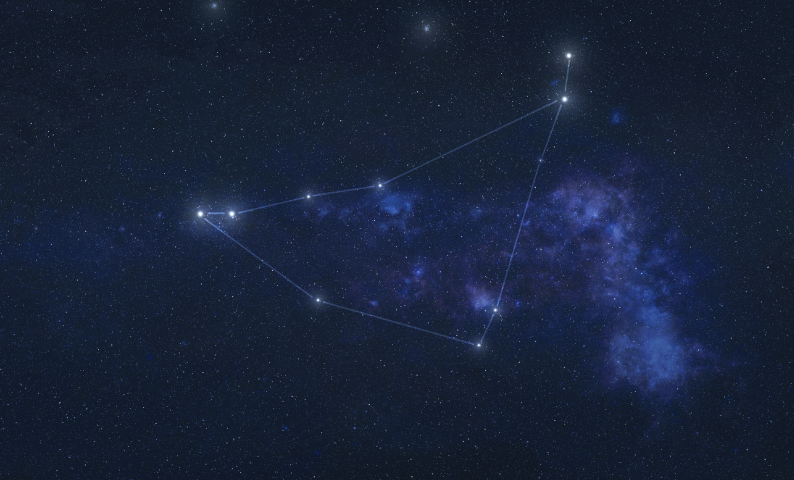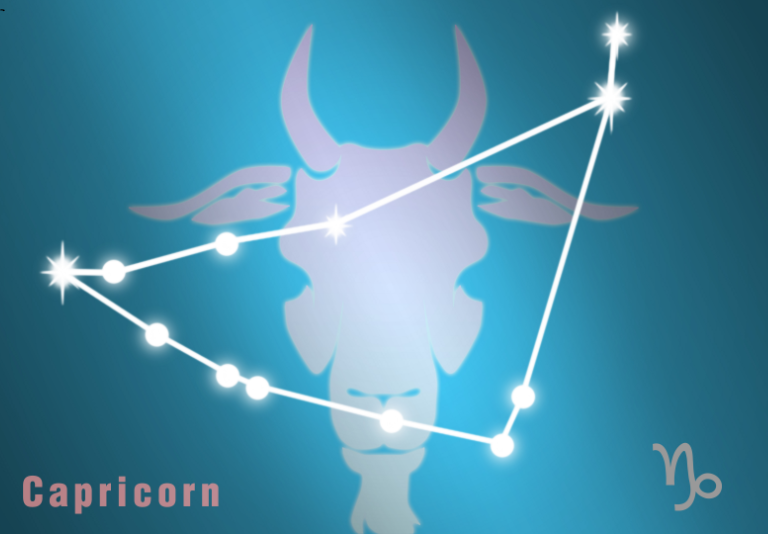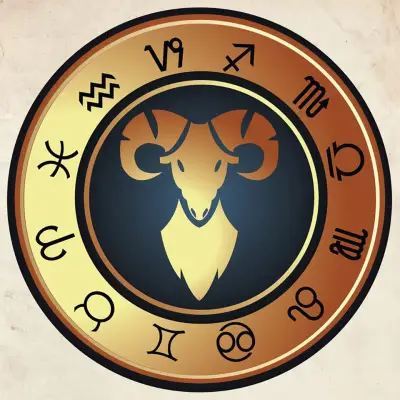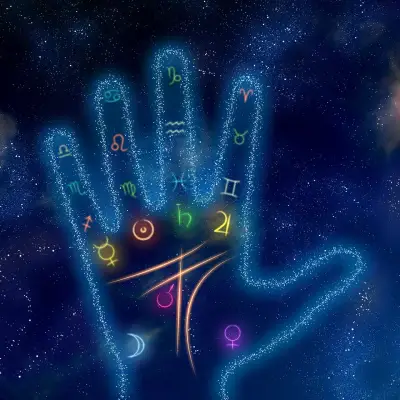Constellations carry tales from ancient times and have been a source of fascination for humanity for centuries. One such constellation is Capricornus, often simply known as Capricorn. Whether you're an avid stargazer, a mythology enthusiast, or someone curious about astrology, the Capricorn constellation holds a treasure trove of intriguing information.
Jump to:
What is the Capricornus Constellation?

Capricornus, often referred to as Capricorn, is a constellation in the zodiac. It is one of the 88 modern constellations and is also one of the 12 constellations in the zodiac, which means it lies along the path that the Sun, Moon, and planets travel through the sky.
The Capricornus constellation is known for its distinctive shape, which resembles a sea goat—a mythical creature with the front half of a goat and the tail of a fish. This unique shape makes it one of the more recognisable constellations in the night sky.
Recommended for you!
Best SellersStars in the Capricornus Constellation
The Capricornus constellation contains several notable stars, but it's not particularly bright compared to other constellations. Here are some of its key stars:
- Deneb Algedi (Delta Capricorni): The brightest star in Capricornus, Deneb Algedi is a binary star system located approximately 39 light-years away from Earth. Its name means "the tail of the goat" in Arabic.
- Nashira (Gamma Capricorni): Another significant star, Nashira is a giant star about 139 light-years from Earth. Its name translates to "the lucky one" or "the bearer of good news."
- Dabih (Beta Capricorni): Dabih is a binary star system located about 328 light-years away. Its Arabic name means "the butcher."
- Algedi (Alpha Capricorni): Algedi is actually a pair of double stars, Alpha¹ Capricorni and Alpha² Capricorni, located approximately 109 light-years from Earth. This pair is easily visible to the naked eye and can be resolved into two separate stars with binoculars.
- Algiedi Prima (Alpha¹ Capricorni): Part of the Algedi system, this star is a yellow giant located about 690 light-years away. It is a binary star, though its companion star is much fainter and harder to see.
- Algiedi Secunda (Alpha² Capricorni): The other part of the Algedi pair, this star is a yellow giant located around 109 light-years away from Earth. It is also a binary system with a fainter companion.
- Baten Algiedi (Omega Capricorni): This star, whose name means "the belly of the goat," is a red giant located about 670 light-years away. It has a distinct reddish hue and is one of the more interesting stars to observe in the constellation.
- Psi Capricorni: Psi Capricorni is a binary star system approximately 47 light-years from Earth. It consists of a white main-sequence star and a fainter companion star.
- Rho Capricorni: This star is located around 146 light-years away from Earth and is known for its peculiar chemical composition, rich in elements like mercury and manganese.
While Capricornus does not have many very bright stars, its unique shape and interesting mythology make it a constellation worth exploring.
Capricornus Mythology
Capricorn Sea Goat: A Mythical Creature
The Capricorn constellation is deeply rooted in mythology. In Greek mythology, Capricornus is often associated with the god Pan. Pan, the god of the wild, shepherds, and flocks, had the legs and horns of a goat. When he was escaping from the monster Typhon, he jumped into the Nile River, and the part of his body that was submerged transformed into a fish, creating the sea goat.
Capricorn Greek God and Goddess
While Pan is the primary god associated with Capricornus, some myths also link the constellation to the goat Amalthea, who nursed the infant Zeus. In gratitude, Zeus placed her image in the sky. In astrology, Capricorn is ruled by Saturn, a god associated with time, discipline, and harvest.
Where is Capricornus in the Sky?

Finding Capricornus in the sky can be a bit challenging due to its relatively faint stars. However, with a bit of guidance and some patience, you can locate this intriguing constellation. Here are some detailed tips and information to help you spot Capricornus.
Best Months and Times to View
Capricornus is best visible in the early autumn months for observers in the Northern Hemisphere. Specifically, the constellation is most prominent in the night sky from August to October. During these months, you can see it in the southern sky.
For observers in the Southern Hemisphere, Capricornus is also visible but appears higher in the sky. It can be observed during the winter and spring months, offering an excellent opportunity to spot it without the hindrance of bright summer nights.
Viewing Tips
- Choose a Dark Location: Since Capricornus has relatively faint stars, finding a dark location away from city lights will significantly improve your chances of spotting the constellation.
- Use a Star Chart or Astronomy App: Star charts and astronomy apps can help you navigate the night sky. These tools often have the option to search for specific constellations, making it easier to locate Capricornus.
- Look for Neighbouring Constellations: To locate Capricornus, look for the brighter stars of neighbouring constellations like Sagittarius and Aquarius. Sagittarius lies to the west of Capricornus, while Aquarius is to the east. Identifying these constellations first can help you narrow down the area of the sky to search.
- Identify the Triangular Shape: Capricornus is often found by identifying its characteristic triangular shape. This shape can guide you as you search for the constellation among the stars.
- Use Binoculars or a Telescope: While you can see Capricornus with the naked eye, using binoculars or a small telescope can enhance your viewing experience, allowing you to see more stars and details within the constellation.
Capricornus in Modern Astronomy
While Capricornus has ancient mythological roots, it also holds significance in modern astronomy. It is home to several interesting deep-sky objects and celestial phenomena:
- Messier 30: A globular cluster located within Capricornus, Messier 30 is a collection of thousands of stars bound together by gravity. It is one of the oldest clusters in our galaxy.
- Capricornid Meteor Shower: Every year, in late July and early August, the Capricornid meteor shower occurs. While it is not as famous as the Perseids, it still offers a delightful show of meteors radiating from the Capricornus region.
Capricornus in Astrology

In astrology, Capricorn is an earth sign ruled by the planet Saturn. People born under this sign are often described as hardworking, ambitious, and practical. They are believed to possess strong organizational skills and a disciplined approach to life.
The influence of the Capricorn constellation in astrology highlights themes of responsibility, career, and long-term goals. Capricorns are often seen as the planners and strategists of the zodiac, with a focus on building a secure and stable future.
Want to put your knowledge of Astrology to the test?
Centre of Excellence has you covered.
Sample the first 2 modules of our Astrology Diploma Course for FREE!
Frequently Asked Questions about Capricornus Constellation
What is the best time of year to see the Capricornus constellation?
Capricornus is best visible during late summer and early autumn. For observers in the Northern Hemisphere, the constellation is most prominent in the night sky from August to October, when it can be seen in the southern sky.
Can Capricornus be seen from both hemispheres?
Capricornus can be seen from both the Northern and Southern Hemispheres. However, it appears higher in the sky for observers in the Southern Hemisphere. In the Northern Hemisphere, it is best viewed in late summer to early autumn, while in the Southern Hemisphere, it can be seen during winter and spring.
Are there any planets visible in the Capricornus constellation?
While Capricornus does not host any permanent planets, it lies along the ecliptic path, which is the apparent path of the Sun, Moon, and planets across the sky. This means that from time to time, planets such as Jupiter, Saturn, or Mars can pass through the constellation.
Does the Capricornus constellation have any meteor showers?
The Capricornus constellation is associated with the Capricornid meteor shower, which occurs annually in late July and early August. Although it is not as prolific as some other meteor showers, it can still provide a lovely display of meteors radiating from the direction of Capricornus.
What is special about capricornus?
One special feature of Capricornus is its age. It is one of the oldest constellations recognised by humans, with records dating back to the Babylonian era. The Babylonians associated the constellation with the god Ea, who had the body of a fish and the head of a goat, further solidifying the sea-goat symbolism.
What are some notable deep-sky objects in Capricornus?
One of the most notable deep-sky objects in Capricornus is Messier 30 (M30), a globular cluster located about 27,000 light-years from Earth. This dense collection of stars is a beautiful target for amateur astronomers with telescopes. Additionally, the constellation contains several galaxies and star clusters, although they may require a telescope to observe in detail.
Is Capricornus part of any larger star patterns?
Capricornus is part of the zodiac, a group of 12 constellations that lie along the ecliptic. The zodiac constellations are significant in both astronomy and astrology. Capricornus is neighboured by Sagittarius to the west and Aquarius to the east.
What are the origins of the Capricornus constellation's name?
The name "Capricornus" is derived from Latin and means "horned goat" or "goat horn." The constellation's name reflects its depiction as a sea-goat, a mythical creature with the front half of a goat and the tail of a fish. This imagery has ancient roots in Babylonian and Greek mythology.
Why is Capricornus considered a sea-goat?
The sea-goat imagery of Capricornus comes from ancient mythology. In Greek mythology, the god Pan transformed into a sea-goat to escape the monster Typhon. The sea-goat symbolizes both terrestrial and aquatic elements, combining the characteristics of a goat and a fish. This dual nature is reflected in the constellation's shape.
Can beginners in astronomy easily find Capricornus?
While Capricornus is not the brightest constellation, it can be located with some patience and a bit of guidance. Using star charts or astronomy apps can help beginners find its distinctive triangular shape. Observers should look for it between the constellations Sagittarius and Aquarius, especially during the late summer and early autumn months.
Recommended for you!
Best SellersStudy Astronomy for £29
If the story of Capricornus has piqued your interest, there is so much more to discover about the stars and constellations. At Centre of Excellence, we offer an Astronomy Diploma Course that provides a clear guide to the cosmos. For a limited time, you can enrol in this fascinating course for a discounted price of £29.












